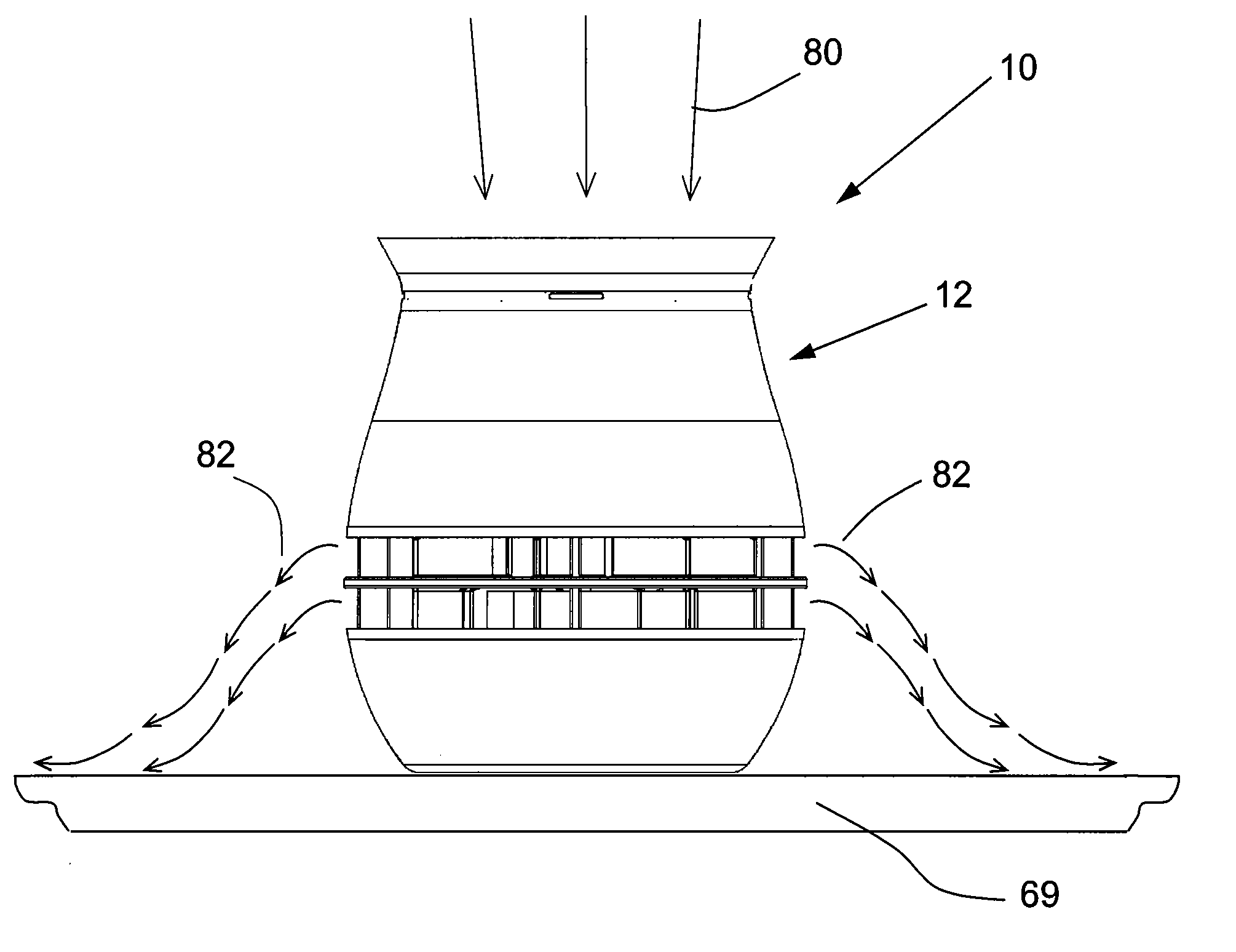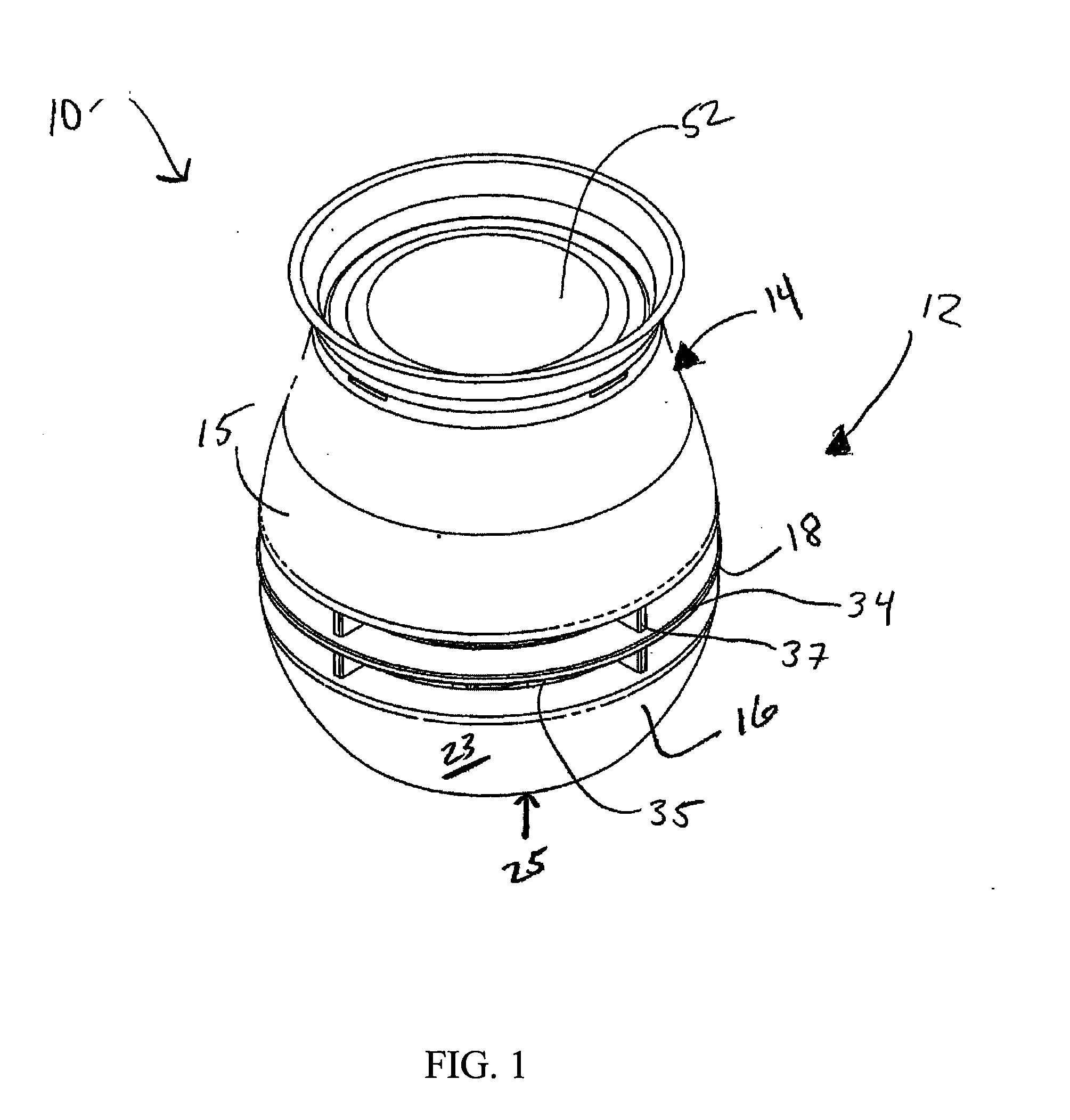Dust Prevention And Removal Device
- Summary
- Abstract
- Description
- Claims
- Application Information
AI Technical Summary
Benefits of technology
Problems solved by technology
Method used
Image
Examples
second embodiment
[0087]FIGS. 26A-26C illustrates the lock and key assembly 473 of the device 410 of the present invention. In the current embodiment of the lock and key assembly, the upper portion 414 of the housing 412 secures a filter frame portion 482 between the upper projection 438 of the device 410. Accordingly, the filter 452 is snap-fitted therebetween to secure the filter 452 into place. In one embodiment (not shown) the filter 452 is heat stake bonded to the filter frame 482 and preferably requires a separation force from filter frame of more than 0.113 kilograms (kg.) (0.25 pounds (lbs.)) while the insertion and removal force of the filter frame holding the filter from the device is at least 0.9 kg (2 lbs.) and no greater than 1.8 kg (4 lbs.).
third embodiment
[0088]Turning to FIGS. 27A-27C, a lock and key assembly 573 of the device 510 includes a lever 586 to actuate a switch 588. The lever is hingedly connected to an interior surface of the housing 512 preferably below the motor 556. A spring 589 is positioned between the lever and the bottom surface of the housing 512. An actuation rod 590 is longitudinally disposed through the center of the device 510 in communication with the motor 556 and lever 586. The actuation rod 590 is configured to engage a receiver 591 on the grill 544. The lock and key assembly 573 is configured such that when a filter 552 is pushed into place on the grill 544, the actuation rod 590 is engaged such that the actuation rod contacts the lever 586 and biases the lever 586 downwardly. An arm 587 of the lever 586 is configured to engage the switch 588 to thereby activate the device 510. Accordingly, the device 510 is incapable of operation without the presence of a filter media configured to fit the grill 544. In ...
fourth embodiment
[0089]Referring now to FIG. 28, the lock and key assembly 673 includes switch 688 disposed within the device 610. The grill 644 includes a plunger 694 extending downwardly therefrom and terminating in a lever 686. Accordingly, upon insertion of the filter 652 into the grill 644, the plunger 694 is depressed thereby bringing the lever 686 into communication with the switch 688 to activate the device 610.
PUM
| Property | Measurement | Unit |
|---|---|---|
| Angle | aaaaa | aaaaa |
| Force | aaaaa | aaaaa |
| Power | aaaaa | aaaaa |
Abstract
Description
Claims
Application Information
 Login to View More
Login to View More - R&D
- Intellectual Property
- Life Sciences
- Materials
- Tech Scout
- Unparalleled Data Quality
- Higher Quality Content
- 60% Fewer Hallucinations
Browse by: Latest US Patents, China's latest patents, Technical Efficacy Thesaurus, Application Domain, Technology Topic, Popular Technical Reports.
© 2025 PatSnap. All rights reserved.Legal|Privacy policy|Modern Slavery Act Transparency Statement|Sitemap|About US| Contact US: help@patsnap.com



